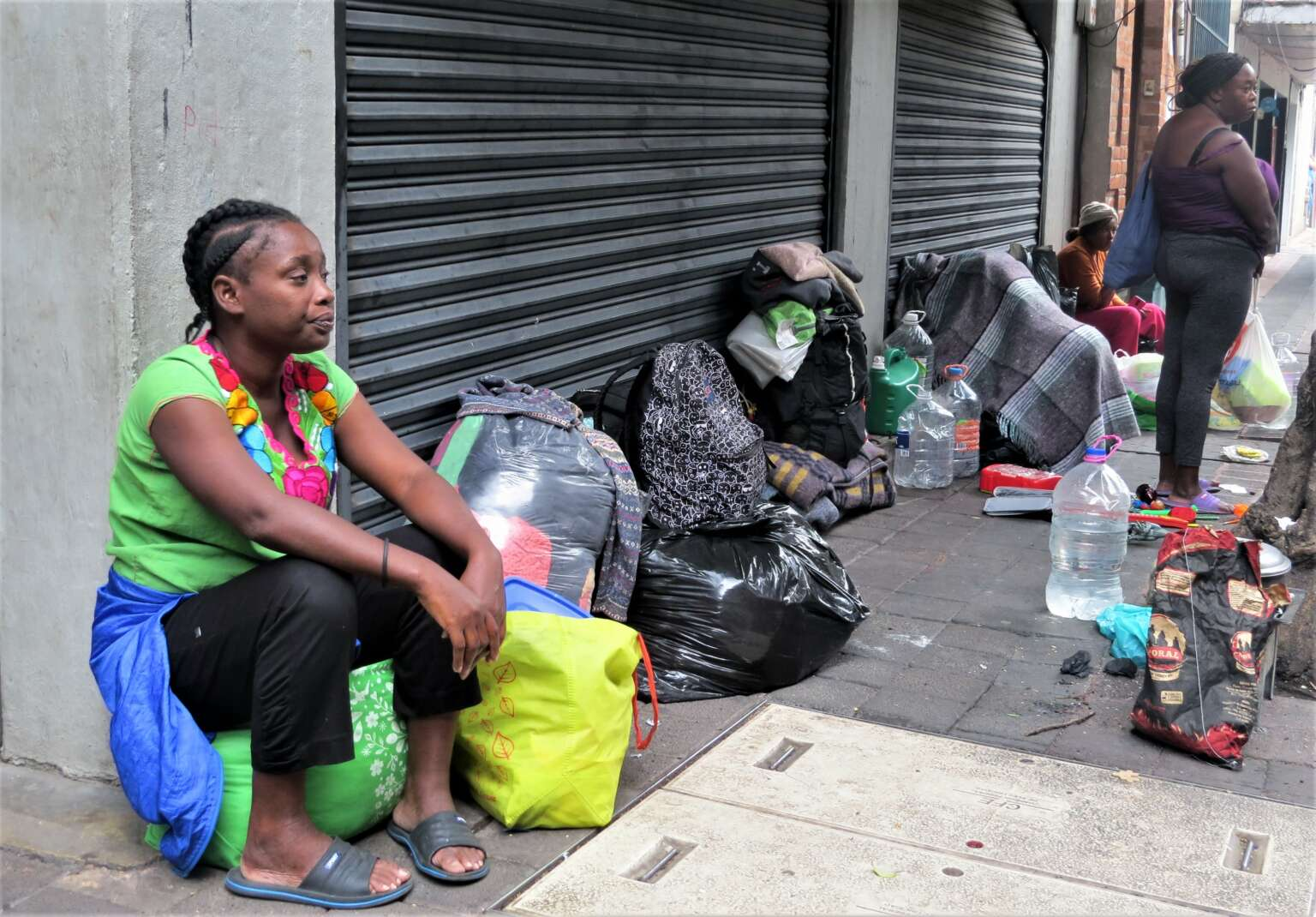
Haitian refugees living on the streets of Mexico City.Haitian refugees living on the streets of Mexico City.
Mexico City, July 24 (RHC)-- Thousands of migrants are sleeping on the streets of Mexico, waiting to get an appointment for an interview at the U.S. border, only to be deported back to dangerous and impossible living conditions.
Since the pandemic border measure Title 42 ended in early May, English-language mainstream media has emphasized that fewer people are trying to cross the U.S.-Mexico border. But the need to migrate hasn’t changed. Instead, mainstream media are obscuring a harsher reality, in which new policies have turned Mexico into a holding country for refugees and migrants.
Interviews at the border are scheduled by an app, which forces refugees to wait for weeks or months. A new third country rule, in place since Title 42 ended on May 11 this year, means any migrants who have passed through other countries on their way to Mexico — something that is inevitable for many — must first seek asylum in those countries or otherwise be deported upon their arrival to the U.S. Under a new agreement, Mexico is now accepting Nicaraguans, Cubans, Haitians and Venezuelans that the U.S. has deported.
Nobody knows exactly how many refugees and migrants are sleeping on Mexico’s streets, because there is no registry and there are no systems in place to look after migrants or provide them with information.
“But that doesn’t make sense,” Valmont Luc Son, a Haitian refugee, told me as we sat in the street where he is staying, a few blocks from the Mexican Commission for Refugee Assistance (COMAR) in downtown Mexico City. He hadn’t heard about the third country rule, and I was explaining it to him as I interviewed him.
“I am fleeing an impossible situation — so much violence and corrupt politicians. We have to come through other countries to get to the border. I am sure it will be fine, they will have to let me in. What other options do we have? Where are we supposed to go if we can’t stay here and we can’t be in Haiti and we get rejected when we go to the U.S.?” he asked, frustrated.
Because the app for border interviews, called CBP One, is only accessible from Mexico City and north of there, Mexico City has now joined the northern border cities as a waiting place. The country is functioning as a staggered bottleneck. Some 15,000 migrants have been waiting for months — taking shelter from the rain under trees and trucks — in Tapachula, near the border with Guatemala, for transit visas to pass through Mexico. Then they wait in Mexico City to be assigned a port somewhere along the border for an interview with U.S. Customs and Border Protection (CBP) officers. At the end of May, COMAR announced that for the first time ever, it received more asylum requests in its Mexico City offices than in Tapachula.
In a joint statement released in June, more than 40 Mexican activist and NGO groups wrote: "The U.S. government has implemented a series of political agreements with Mexico and Central American countries, disguised as shared responsibility, in order to contain migration, but with no concern that they are externalizing their borders.… They are putting people at risk, not just of being deported to the situations they were fleeing, but also exposing them to the dangers of the journey. In Mexico, the government has left the responsibility of providing orientation and attention … to civil society.”
Shelters in Mexico City, working together in a “network of solidarity,” have been overflowing for eight months. Samantha Hernández Cerón, a spokesperson for CAFEMIN shelters, told reporters the shelters are working at “up to 900 percent of our capacity.”
“At our peak, (CAFEMIN) had 1,000 people a night, and in this shelter (one of three run by CAFEMIN, located in the center-north of Mexico City) where we have the capacity for 80 people, we currently have 250,” she said.
Shelters depend on donations and fundraising to provide migrants with beds, food and workshops on how to use the new CBP app. “We are focused on resolving urgent problems, and don’t have time to deeply analyze the situation, or consider the long-term logistic, economic and operative challenges,” Hernández said, arguing that such issues can only be addressed through collective organization.
Shelters to the north, in states like Jalisco, Querétaro and San Luis Potosí, are also well beyond capacity. Monterrey, where few refugees went in the past, is now seeing 300-400 arriving at the main bus terminal daily.
“Without a doubt, there are more migrants now, and there is greater need. There’s a bottleneck here (in Tijuana), a situation of serious precariousness,” said Graciela Zamudio, the founding lawyer of Alma Migrante, an organization that provides migrants with advice and legal workshops.

